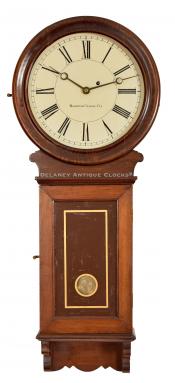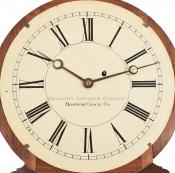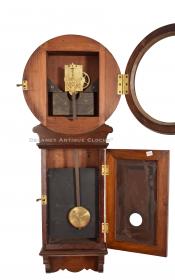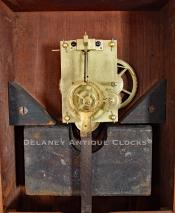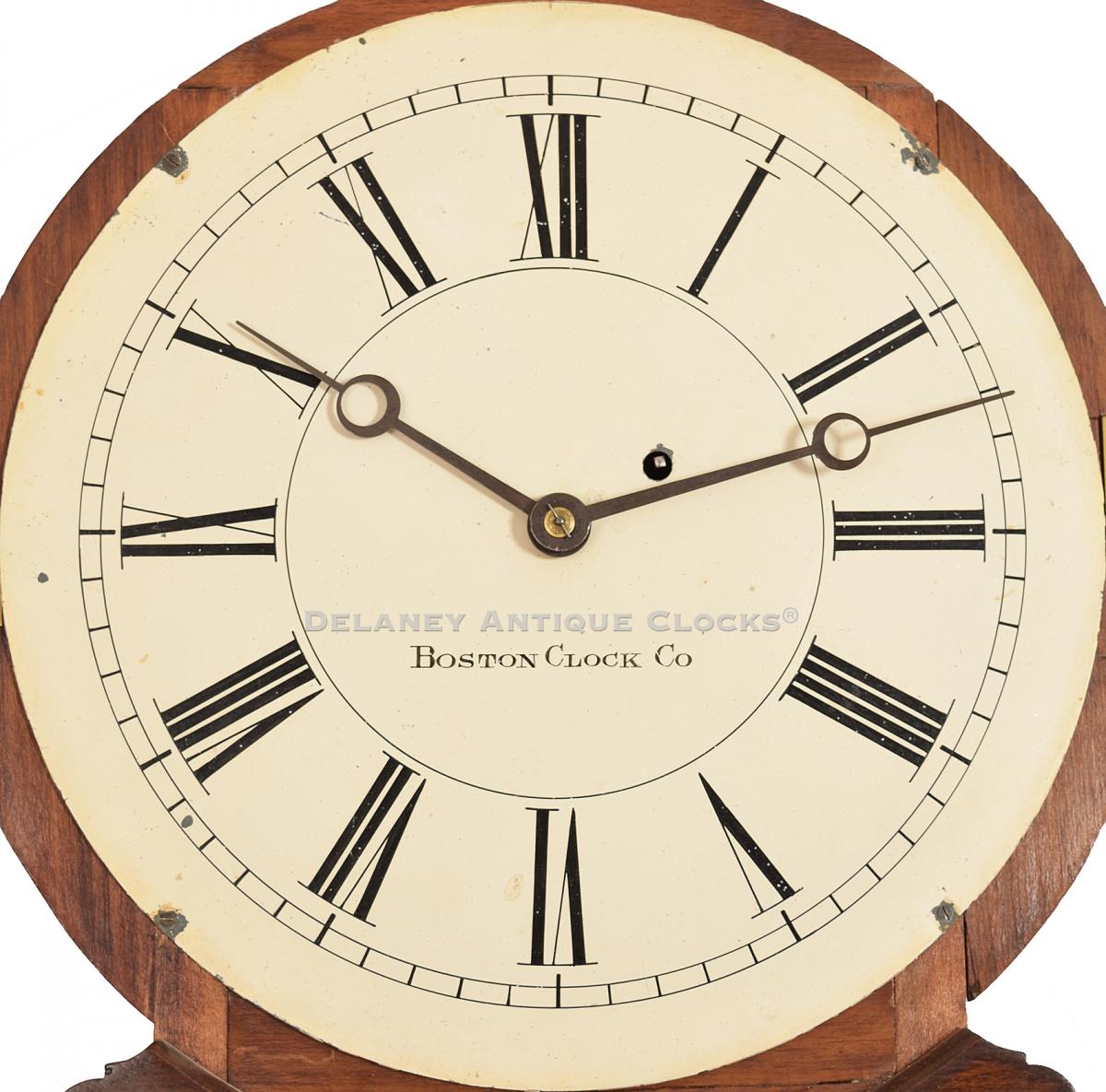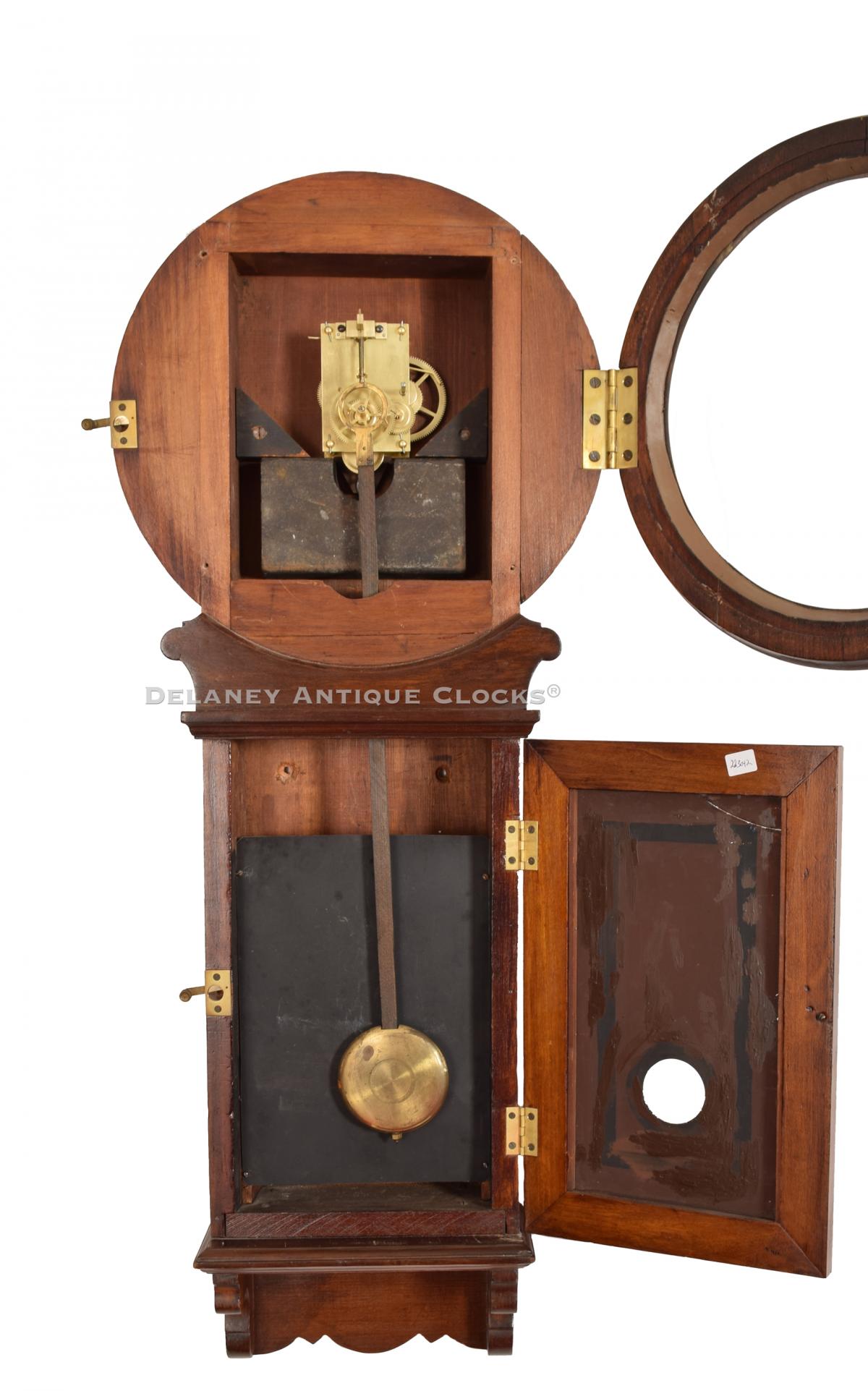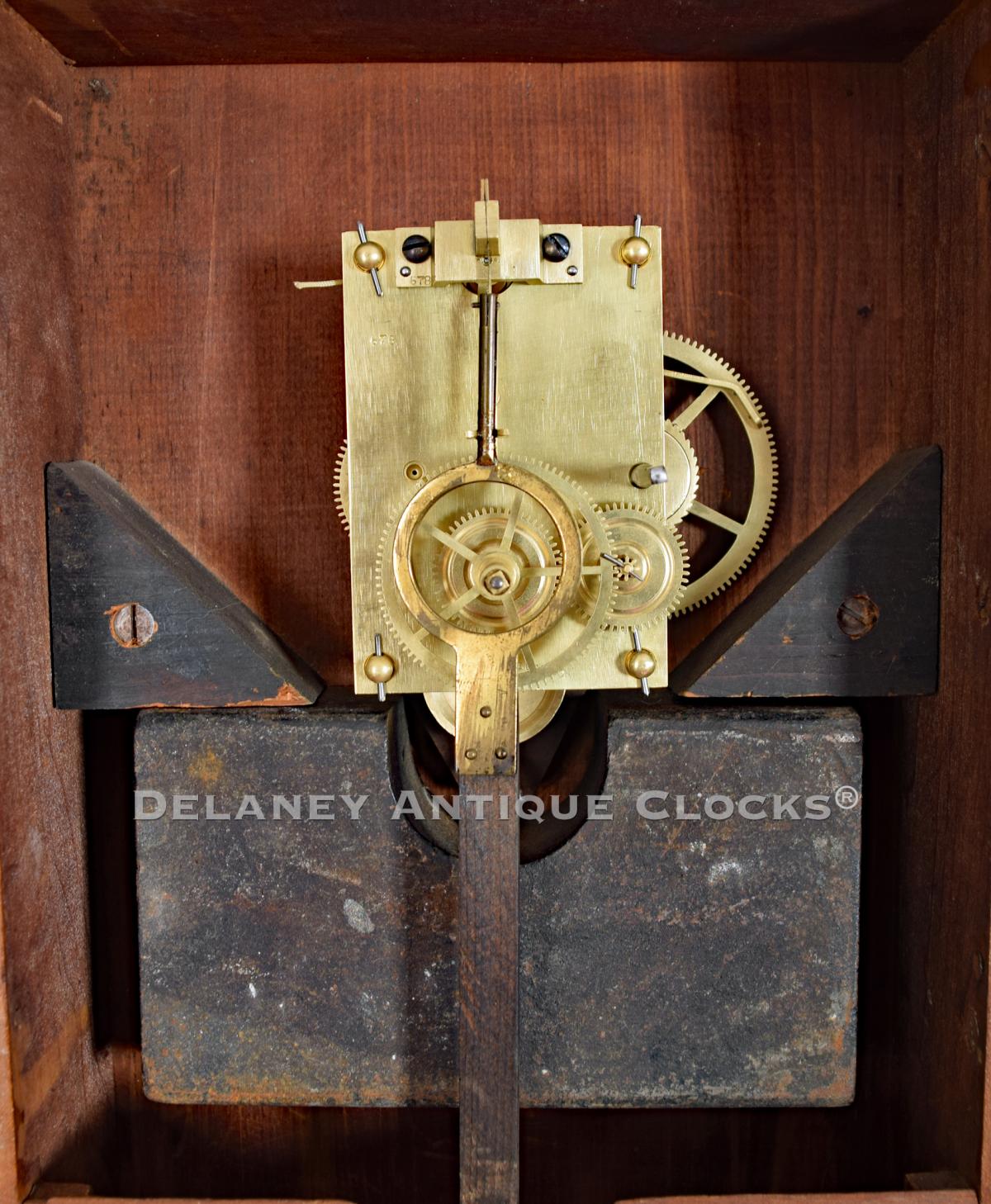Boston Clock Co., Boston, MA. No 678. Wall clock. 223042.
This is a very popular form having a circular wooden bezel and a long drop underneath it. Many other clock companies made similar clocks which also sold well. This case appears to be maple and retains its original red wash, which is clean and stable. This BCC version is a little longer than most due to the bracket mounted below the lower door. The bracket on this clock has been restored. The lower door is fitted with glass that is painted from the back. This glass is cracked in the upper left corner. Because this is an original tablet and the fact that it is stable, it is a good idea to leave this in as-found condition. The reddish brown color has been seen before and is original to this example. The Boston Clock Co also offered this model with blue and green in this location. The gilt designs breaks up the field of color. The circular aperture is left undecorated so one can view the brass-covered bob. Another nice design element is the ears positioned below the bezel. The bezel is nicely shaped and fitted with glass. It is hinged and opens to access the painted dial.
The dial is painted on a heavy zinc sheet and measures 13.5 inches in diameter. The time ring is 11.5 inches in diameter. The dial is signed by the manufacturer, “Boston Clock Co.” across the center. Roman-style hour numerals are used for the hours and positioned inside a closed minute ring. Open moon hands depict the time.
The movement is brass and is die-stamped by the Maker on the lower edge of the front plate. It is numbered “678” in two locations. This number can be found on the front plate and the bridge. This movement is weight driven and is designed to run for eight days. The pendulum rod is wood, and the bob is brass. The motion of the pendulum bob can be viewed through the opening of the painted tablet in the door.
This clock case is approximately 35.75 inches long overall and was made circa 1888.
Inventory number 223042.
The Boston Clock Company was organized by Joseph H. Eastman, James Gerry, and others on May 29, 1884. It was actually located in Chelsea, Mass. This company was formed as the successor to Joseph H. Eastman's Harvard Clock Company 1880-1884. Joseph H. Eastman became the manager of this new firm. This company failed in 1895, and in March of the same year, Joseph Eastman and others tried to revive it as the Eastman Clock Company. This new firm lasted only one year and eventually became the Chelsea Clock Co. in 1897.
The Boston Clock Company manufactured clocks predominately in the style of various crystal regulators, carriage clocks, and other mantel clocks in marble cases. These clocks often featured a compensating balance wheel spring-powered movement. A small number of weight-driven wall clocks were also produced. Most of which were similar in form to the Howard model No., 5 & No., 70 and the Chelsea No., 1.
Boston Clock Company clocks were sold through salesrooms that included Smith & Patterson in Boston, G. S. Lovell & Co in Philadelphia and Wm. H. Atwater in New York.

